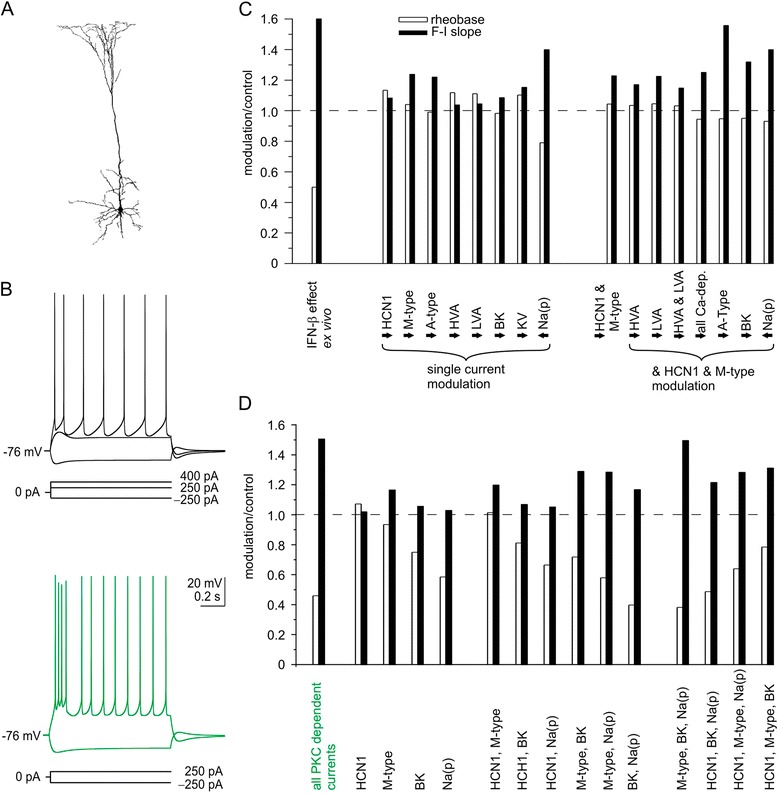Figure 1.

Concerted protein kinase C modulation of ionic conductances mimic type I IFN effects on suprathreshold excitability in silico . (A) Cell geometry used in the model. (B) Voltage response of the simulated neuron to different input currents for control conditions (black traces) and after simulating protein kinase C (PKC)-mediated ionic current modulations (green traces). Virtual 1-second rectangular current injections are given below trace families. Note that the virtual current injection of 250 pA did not elicit an action potential under control conditions whereas it caused extensive firing when PKC-dependent ionic currents were modulated. (C) Omnidirectional trial of various ionic current modulation effects on rheobase (open columns) and F-I slope (solid columns). Peak currents were reduced (arrows to the right) or increased (arrows to the left) by 25 or 50%. All tested modulations failed to reproduce our ex vivo results (leftmost columns). (D) Ionic current modulations matching described PKC effects. Our ex vivo results were reproduced when known PKC modulated currents mediated by hyperpolarization-activated cyclic nucleotide gated channel subunit HCN1 (I h), M-type (I M), large conductance calcium-activated potassium channels BK (I BK) and persistent sodium channels Na(p) (I Nap) were altered (compare leftmost columns in (C) with (D)). In detail, the F-I slope increased to 116 Hz/nA (1.56 × initial value) and the rheobase decreased to 146 pA (0.48 × initial value). For I Nap we modulated the V1/2 instead of the peak conductance (as in (C)). An orchestrated modulation of all PKC-dependent channels is necessary to reproduce the effect since trials in which we merely altered one, two or three of the four PKC-modulated currents failed to do so.
